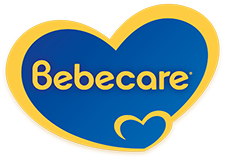Create a separate login for your accountant to make it easy for her to work with you. You can exchange messages and share documents directly inside QuickBooks, too. Now, simply compare the transactions on your statement with what’s in QuickBooks. The tricky part is making sure you have the right dates and transactions in QuickBooks so you know everything matches. Keep in touch with me if you need further assistance in accomplishing your other bookkeeping tasks and managing your financial reports. Match each transaction listed in your bank statement with those in QuickBooks Desktop.
A recent survey suggests that 72% of self-employed contractors do their own accounting. If you’re among them, it’s crucial to understand what reconciliation is and how to do it right. If you have further concerns about matching your downloaded transaction, please add them to the thread and I’d be happy to assist you further. You can also make small edits if needed right within this window.
More than bank reconciliation. Run your entire business with QuickBooks.
Reconciling is an important task that you should carry out regularly. Reconciliation is a process that you should aim to complete regularly. With QuickBooks, there are ways to speed up or even automate the process. Reconciling does not need to be entirely manual these days. Second, it provides a clear picture of your financial health, giving you updated insights into your income, expenses, and overall profitability.
- The goal is to have a zero difference between your statement and QuickBooks Online by the end of the process, at which point you can select Finish now.
- You need to make sure the amounts match your real-life bank and credit card statements.
- Locate “Reconciliation Reports” in the report center, and QuickBooks will take you to the History by account screen.
- If you forgot to enter an opening balance and you’re already tracking transactions in the account, here’s how to enter an opening balance later on.
Reconciling your accounts is an essential accounting task. This is a checks-and-balances measure that lets you verify the accuracy of your accounting records. When done correctly, it also helps you prevent fraud in your business.
You’re our first priority.Every time.
The process for reconciling these accounts is the same as the process for reconciling a bank or credit card account, and it typically takes only moments to do. Reconciling your accounts is an important step in your business accounting process. Usually, reconciliation signals all the information in your books has been verified against an outside source and the books are ready to be closed for the month. You also need to ensure that the opening account balance shown in QuickBooks is correct. This is especially important the first time that you carry out a reconciliation.
In other words, there’s no need — or even any purpose — to reconcile accounts like fixed assets or intangible assets unless there is an outside document you can refer to for reconciliation. Even then, you’ll likely only reconcile non-bank accounts once a year, as in an inventory reconciliation. Over a short timeframe such as a month, differences between the two balances can exist (due to bank errors or checks that have not been cashed by the payee, for example). Rest assured that your QuickBooks and bank statements align perfectly, giving you peace of mind when closing your books.
Why Bank Reconciliation in QuickBooks Is Important
Remember, after undoing a previously reconciled transaction, you may need to re-reconcile to keep your books accurate. Also, it’s always a good idea to consult your accountant or financial advisor before making these changes. Select Start Reconciling and carefully match each transaction in QuickBooks to your bank or credit card statement.
If you’re new to reconciliations or need more help, reach out to your accountant. This can get tricky and they know how to handle the next steps. You’ll want to look at your statement, starting with the first transaction listed and find that same transaction in the Reconciliation window in QuickBooks.
Reconcile faster with real-time accounting automation
If you reconciled a transaction by accident, here’s how to unreconcile individual transactions. When handling discrepancies between QuickBooks and your bank statements, start by comparing each transaction in QuickBooks against the bank statements to spot any differences. For reviewing past reconciliations, navigate to the Reports menu and select Reports Center.
Save time on monthly reconciliations with QuickBooks
We recommend reconciling your current, savings, and credit card accounts every month. Check out our complete reconciliation guide to understand the full workflow. Reconciling a bank statement is an important step to ensuring the accuracy of your financial data. To reconcile bank statements, carefully match transactions on the bank statement to the transactions in your accounting records. With QuickBooks, you can easily reconcile bank accounts to ensure that the dollars you record are consistent with the dollars reported by the bank. To run a reconciliation report, navigate to Settings, choose Reconcile, and then select History by account.
Investigate Unmarked Transactions on Your Bank Statement
Check off each transaction in QuickBooks that matches your statement. Mark Calatrava is an accounting expert for Fit Small Business. As a QuickBooks ProAdvisor, Mark has extensive knowledge of QuickBooks secured and unsecured debt products, allowing him to create valuable content that educates businesses on maximizing the benefits of the software. To complete the reconciliation process, you must verify that the difference is zero.


